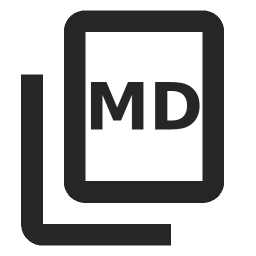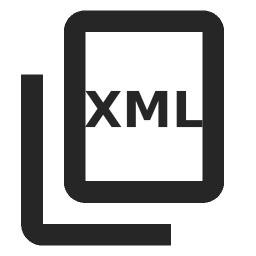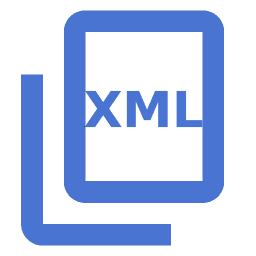|
ARGB
|


Represents an ARGB (alpha, red, green, blue) color
|
|
ARGBConverter
|
|
|
Chart
|


Provides a set of static methods for creating and styling charts.
|
|
Chart2D
|
|
|
Chart3D
|
|
|
ChartCarpet
|
|
|
ChartDomain
|
|
|
ChartMap
|
|
|
ChartPolar
|
|
|
ChartSmith
|
|
|
ChartTemplates
|
|
|
ChartTernary
|
|
|
Color
|


Plotly color can be a single color, a sequence of colors, or a sequence of numeric values referencing the color of the colorscale obj
|
|
ColorBar
|


The ColorBar object to be used with ColorAxes.
|
|
ColorConverter
|
|
|
ColorKeyword
|


https://www.w3.org/TR/2011/REC-SVG11-20110816/types.html#ColorKeywords
W3C Recognized color keyword names
|
|
Config
|


The Config object gets passed to the plotly renderer and contains render-specific options.
|
|
Defaults
|


Contains mutable global default values.
Changing these values will apply the default values to all consecutive Chart generations.
|
|
DisplayOptions
|
|
|
Font
|


Font type inherits from dynamic object
|
|
Frame
|
|
|
GenericChart
|


Module to represent a GenericChart
|
|
GenericChartExtensions
|


Extension methods for providing a Plotly.NET fluent interface pattern for C#
|
|
HTML
|
|
|
Layout
|


A Layout object in the context of plotly charts contains all styling options that are not directly related to the visualization of the data itself, such as axes, legends, watermarks, etc.
|
|
Line
|


The line object determines the style of the line in various aspect of plots such as a line connecting datums, outline of layout objects, etc..
|
|
PlotlyJSReference
|


Sets how plotly is referenced in the head of html docs.
|
|
StyleParam
|
|
|
Template
|
|
|
TickFormatStop
|
|
|
Title
|
|
|
Trace
|


A Trace object in the context of plotly charts contains the data to visualize and additional styling parameters.
This is the base object that contains visualization-unspecific getters and setters for the underlying DynamicObj.
Visualization-specific equivalents are suffixed with the respective trace subtype, e.g. `Trace2D`
|
|
Trace2D
|






The most commonly-used kind of subplot is a two-dimensional Cartesian subplot. Traces compatible with these subplots
support xaxis and yaxis attributes whose values must refer to corresponding objects in the layout portion of the figure.
For example, if xaxis="x", and yaxis="y" (which is the default) then this trace is drawn on the subplot at the intersection
of the axes configured under layout.xaxis and layout.yaxis, but if xaxis="x2" and yaxis="y3" then the trace is drawn at the
intersection of the axes configured under layout.xaxis2 and layout.yaxis3. Note that attributes such as layout.xaxis and
layout.xaxis2 etc do not have to be explicitly defined, in which case default values will be inferred. Multiple traces of
different types can be drawn on the same subplot.
X- and Y-axes support the type attribute, which enables them to represent continuous values (type="linear", type="log"),
temporal values (type="date") or categorical values (type="category", type="multicategory). Axes can also be overlaid on
top of one another to create dual-axis or multiple-axis charts. 2-d cartesian subplots lend themselves very well to creating
"small multiples" figures, also known as facet or trellis plots.
The following trace types are compatible with 2D-cartesian subplots via the xaxis and yaxis attributes:
- scatter-like trace types: scatter and scattergl can be used to draw scatter plots, line plots and curves, time-series plots,
bubble charts, dot plots and filled areas and also support error bars
- bar, funnel, waterfall: bar-like trace types which can also be used to draw timelines and Gantt charts
- histogram: an aggregating bar-like trace type
- box and violin: 1-dimensional distribution-like trace types
- histogram2D and histogram2Dcontour: 2-dimensional distribution-like density trace types
- image, heatmap and contour: matrix trace types
- ohlc and candlestick: stock-like trace types
- splom: multi-dimensional scatter plots which implicitly refer to many 2-d cartesian subplots at once.
|
|
Trace2DStyle
|


Create various functions for applying 2D chart styles to traces
|
|
Trace3D
|


Traces for 3D subplots, using layout.scene as anchors.
These trace types are compatible with 3D subplots via the scene attribute, which contains special camera controls:
- scatter3d, which can be used to draw individual markers, 3d bubble charts and lines and curves
- surface and mesh: 3d surface trace types
- cone and streamtube: 3d vector field trace types
|
|
Trace3DStyle
|


Create various functions for applying 3D chart styles to traces
|
|
TraceCarpet
|
|
|
TraceCarpetStyle
|
|
|
TraceDomain
|
|
|
TraceDomainStyle
|
|
|
TraceGeo
|


The following trace types support attributes named geo or mapbox, whose values must refer to corresponding objects in the layout
i.e. geo="geo2" etc. Note that attributes such as layout.geo2 and layout.mapbox etc do not have to be explicitly defined, in which
case default values will be inferred. Multiple traces of a compatible type can be placed on the same subplot.
The following trace types are compatible with geo subplots via the geo attribute:
- scattergeo, which can be used to draw individual markers, line and curves and filled areas on outline maps
- choropleth: colored polygons on outline maps
The following trace types are compatible with mapbox subplots via the mapbox attribute:
- scattermapbox, which can be used to draw individual markers, lines and curves and filled areas on tile maps
- choroplethmapbox: colored polygons on tile maps
- densitymapbox: density heatmaps on tile maps
|
|
TraceGeoStyle
|
|
|
TraceID
|
|
|
TraceMapbox
|


The following trace types support attributes named geo or mapbox, whose values must refer to corresponding objects in the layout
i.e. geo="geo2" etc. Note that attributes such as layout.geo2 and layout.mapbox etc do not have to be explicitly defined, in which
case default values will be inferred. Multiple traces of a compatible type can be placed on the same subplot.
The following trace types are compatible with geo subplots via the geo attribute:
- scattergeo, which can be used to draw individual markers, line and curves and filled areas on outline maps
- choropleth: colored polygons on outline maps
The following trace types are compatible with mapbox subplots via the mapbox attribute:
- scattermapbox, which can be used to draw individual markers, lines and curves and filled areas on tile maps
- choroplethmapbox: colored polygons on tile maps
- densitymapbox: density heatmaps on tile maps
|
|
TraceMapboxStyle
|
|
|
TracePolar
|


Traces for polar subplots, using layout.polar as anchors.
The following trace types are compatible with polar subplots via the polar attribute:
- scatter-like trace types: scatterpolar and scatterpolargl, which can be used to draw individual markers, curves and filled areas (i.e. radar or spider charts)
- barpolar: useful for wind roses and other polar bar charts
|
|
TracePolarStyle
|


Create various functions for applying polar chart styles to traces
|
|
TraceSmith
|
|
|
TraceSmithStyle
|
|
|
TraceStyle
|


Contains general, visualization-unspecific functions to style Trace objects.
These functions are used internally to style traces of Chart objects.
Users should usually be pointed to the API layer provided by the `Chart` module/object first.
Visualization-specific equivalents are suffixed with the respective trace subtype, e.g. `TraceStyle2D`
|
|
TraceTernary
|
|
|
TraceTernaryStyle
|
|